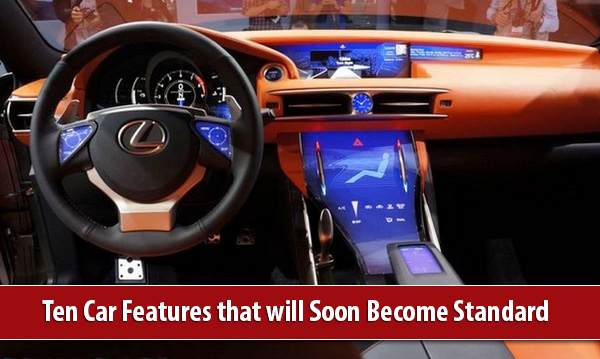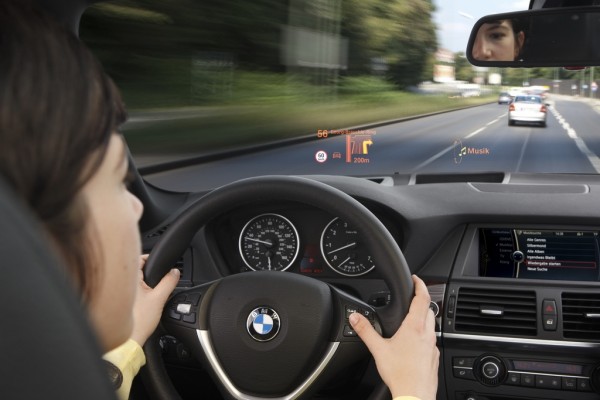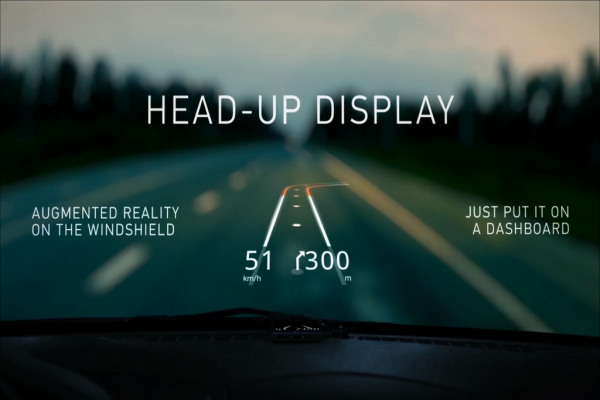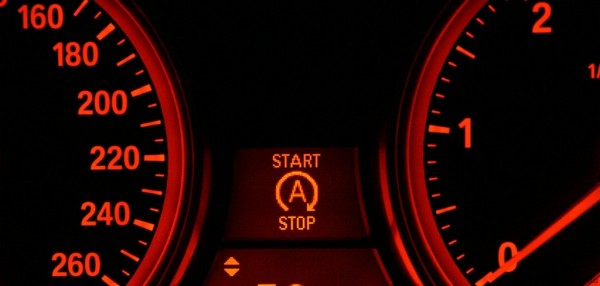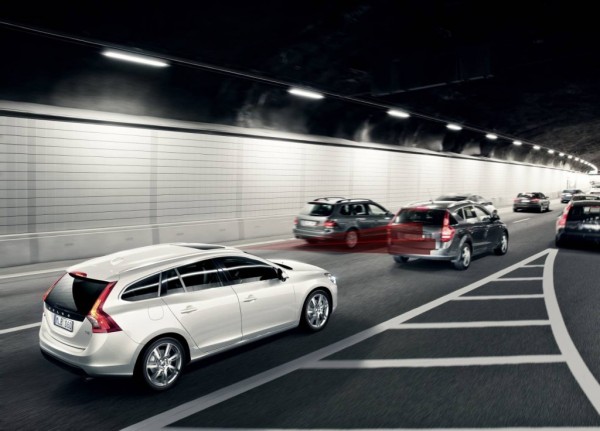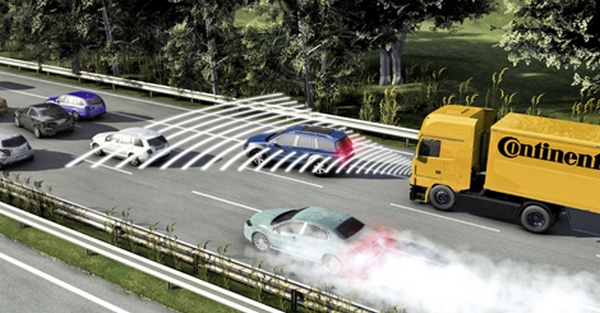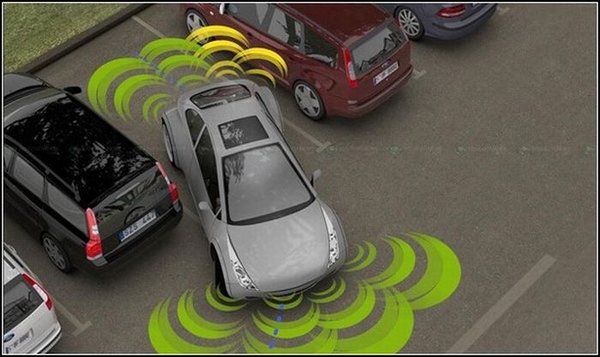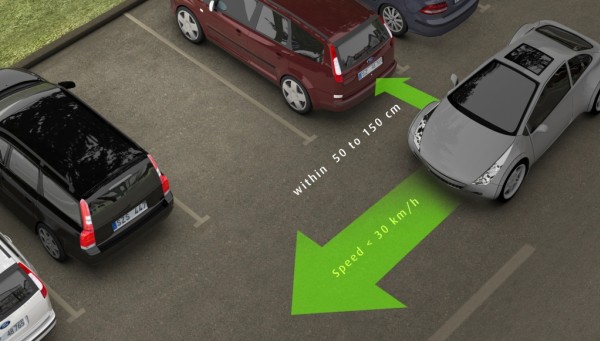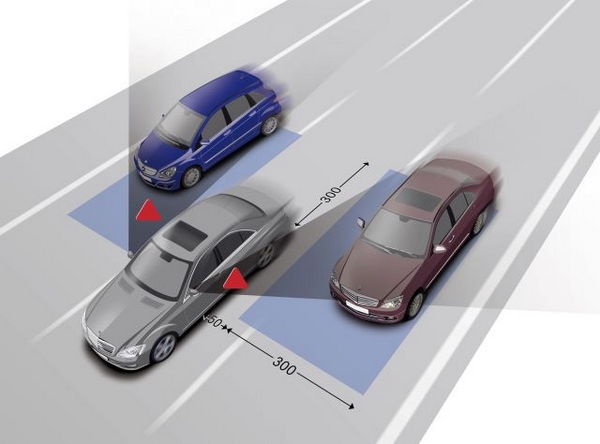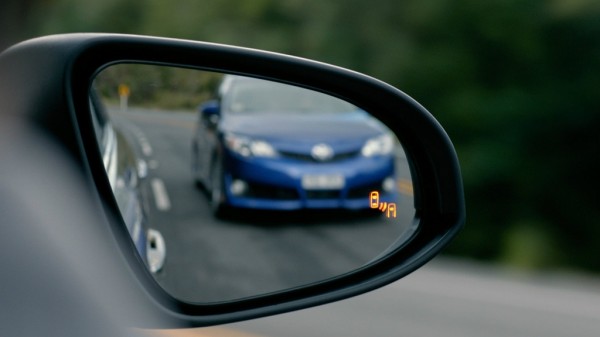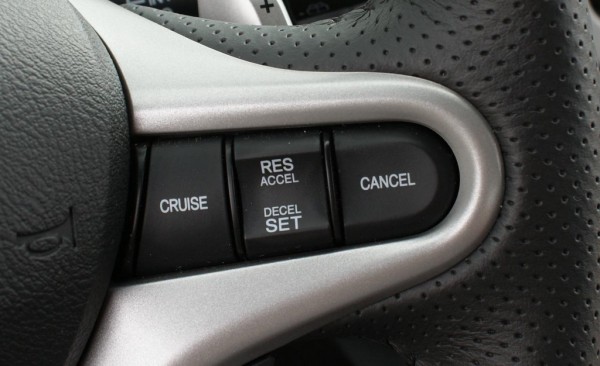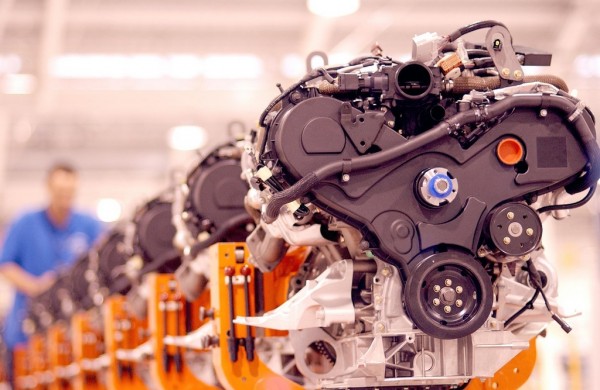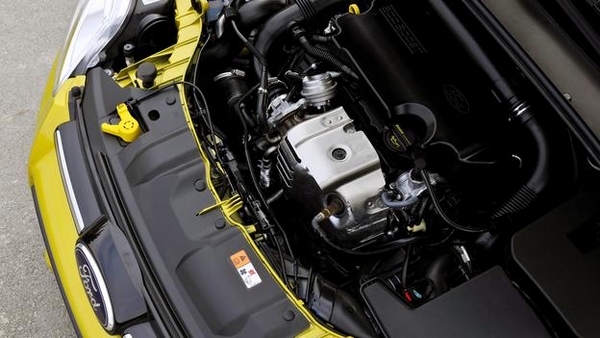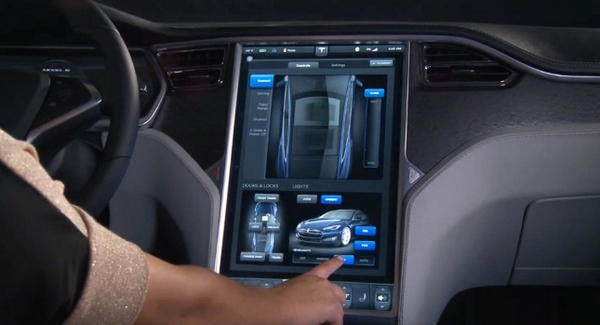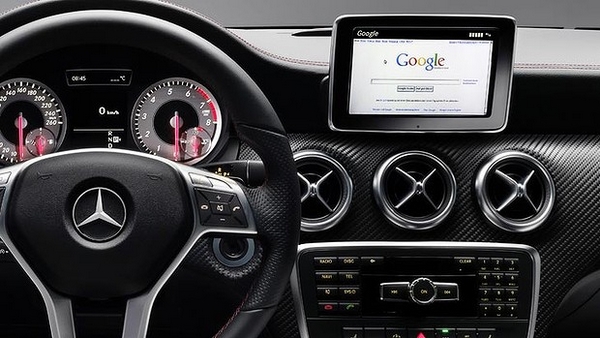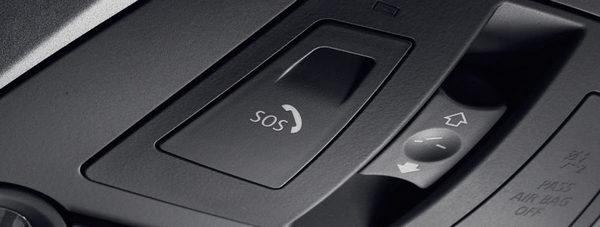We recently published an article about the 10 car features we probably won’t see any more on tomorrow’s cars. Features we’re so used to but we’ll soon see disappear because the automobile is constantly evolving and cars, as we know them, change all the time. So what about the future?
There are already dozens of futuristic features that seem to be taken out of a sci-fi movie or book and you couldn’t believe would exist a decade or two ago. And if we were to use a cliché, now we’d probably say that “the future is here!” Because while some of these features are still being researched (such as the autonomous driving car), most are already being offered by carmakers.
It’s true, for the moment, many of these are only available on high end models or as optional features, but that doesn’t matter, the important thing is that they’re functional and people have access to them. Because if there’s one thing automobile history has taught us is there is just a small step from “exclusive or optional feature” to “standard feature”. There are dozens of features that were first introduced as options and only for luxury models, but which soon turned into standard features and there’s no way we imagine cars these days without some of these.Just think about power windows. Or air conditioning. Or the CD player. Would you buy a new car without these?
Now let’s take a look at a few features we believe will become standard at one point in the future:
Head-Up Display (HUD)
The Head-Up Display is a digital display that is being projected straight on the wind-shield that offers more or less information about the car and the outside environment. The system was initially developed for military aviation, where it was extremely useful because pilots didn’t have to look away to read important data. Actually, that’s where the name comes from, because the pilot was able to keep his head up when viewing the information.
What’s interesting and might come as a surprise is that even though we see this as quite a modern feature, the first “ancestor” of the Head-Up Display was built in the 1920s. Of course, as you can imagine, it wasn’t near as complex and advanced as today and it was only used as a “reflector gunsight” which would improve targeting. The first modern Head-Up Display was built in the 1950s when, besides the gunsightfeature, the system also offered basic flight information. Even though it was quite controversial in the beginning, with many claiming the conventional electro-mechanical instruments were better, it soon proved its superiority and became a standard in aviation. As the system got more and more advanced, it soon found its way in other areas such as commercial aviation and even automobiles.
General Motors came up with the idea of installing Head-Up Displays in 1988 and they were first used on the Oldsmobile Cutlass Supreme Indy Pace Cars. Soon, the American car manufacturer offered the system on production models, as an optional feature on the Cutlass Supreme and Pontiac Grand Prix. It was pretty basic and only showed the speed at which the car was running but still, it was an important innovation for the car industry. Other carmakers soon offered similar systems on their models, such as Nissan for the 240 SX (produced between 1989 and 1994) or Toyota for the Crown Majesta (but only on their home market). The next major innovation in automobile Head-Up Display was again made by General Motors, which offered the first color HUD on the 1998 Chevrolet Corvette C5.
The technology behind the system is based on three important components, a projector unit, a combiner and a video generation computer. But we won’t go into technical details, long story short, in cars where the system is available, there is transparent phosphorous on the windshield that reacts when a laser beam is directed at it and that is how information is being displayed. When the laser’s off, you can’t see anything and the windshield is 100% transparent. There is also a variation of this system that uses small mirrors to project images on the windshield.
Today, almost every car manufacturer out there offers their version of the Head-Up Display system, including Audi, BMW, Nissan, Citroen or Kia. Most of these systems offer basic information, such as speed, revs or warnings such as low fuel or screen washer, but there are more advanced systems offered by carmakers such as General Motors, Honda or Lexus, which also display information from the night vision system. A next step seems to have been made by Pioneer, which has recently released an aftermarket HUD system that, besides the basic information, also shows details about incoming traffic events and other data, some sort of augmented reality.
Start-Stop and Brake Energy Regeneration
While many of us see it as quite a recent “invention”, the first Start-Stop system was developed by Toyota in the 1970s. The Japanese manufacturer installed an early version of the system on a Toyota Crown sedan which turned the engine off after 1.5 seconds of sitting idle. The first tests showed impressive results, with fuel economy being improved by as much as 10% (in a large city like Tokyo).
The first car manufacturers to offer similar systems outside Japan were Fiat (with the Regata “ES”) and, more important, Volkswagen, which produced the Polo “Formel E” (where the “E” stands for “Economy”) in the 1980s. The Formel E was launched in 1981 and it was powered by a 1.1-liter petrol engine (later upgraded to a 1.3-liter unit, starting with 1983), plus a new Start-Stop system called “SSA”, which turned off the engine after being stopped for more than 2 seconds and started it once the gear lever was moved from the neutral position.
Despite offering improved fuel economy, the early versions of the Start-Stop system weren’t extremely popular among drivers for many reasons. First of all, they were extremely expensive. Second, they weren’t as refined as today and offered a bad experience overall: stopped the engine when it wasn’t necessary, had long delays before starting the engine again and sometimes completely failed to start the engine. After the 80s, Volkswagen had other attempts to create an improved version of the Start-Stop system, with the Golf Ecomatic in 1994 and the Volkswagen Lupo and Audi A2 in 1999. The cars weren’t really popular, but despite never achieving commercial success, the Lupo and the A2 are still the most fuel efficient cars ever built. However, the system really became popular in the late 2000s, when stricter emission standards forced carmakers to significantly improve this type of systems in order to reduce fuel consumption and CO2 emissions. BMW is among the most active, with its award winning EfficientDynamicspack of technologies, but great Start-Stop systems are also being offered by Citroen, Fiat, Ford, Hyundai, Honda, Kia, Toyota or Volvo, not to mention on cars produced by the Volkswagen Group.
Today, a typical Start-Stop system has two running modes, depending on the type of transmission the car is equipped with. For manual transmissions, the system stops the engine when the gearbox is put in neutral and only when the car is completely still. Once the clutch is pressed to select a gear, the system automatically starts the engine. There are also some other cases when the engine is started, such when power is needed for certain functions like the air conditioning system. On an automatic transmission, things are easier. The engine is switched off once the car stops and is restarted when the brake pedal is released or the throttle pedal is pressed. However, since the car’s electric systems continue to run (lights, ventilation, air conditioning, power windows, stereo, etc.), a battery solution had to be developed. That’s why all cars with this system usually use a special higher capacity battery or an additional dedicated battery that keeps the systems running while the engine is turned off.
These electrical challenges are one of the reasons another technology was developed, the regenerative braking systems. According to physics and the law of conservation of energy, energy is never destroyed, it is only lost. And that’s exactly what this system is supposed to do, recapture all the energy produced when breaking that would otherwise be lost and convert it into electricity. Even though the system is also used on conventional models, it is most efficient on hybrid and electric cars, where the battery is a far more important component than on a car powered by an internal combustion engine.
So how does this system exactly work? Unlike conventional brakes, where friction between two components (brake pads and discs) is used to slow down a car, regenerative braking systems use electric motors for that. When the brake pedal is pressed, the direction of the electric motors is reversed and the created torque acts to slow down the car. This only happens at lower speeds and conventional brakes are still installed and used to slow down at higher speeds. At the same time, the electric motors basically turn into electric generators, creating electricity. Of course, some of the energy is still lost, but efficiency is significantly improved.
Automatic braking systems
Starting with the early 2000s, collision avoidance systems have been an important concern for many car manufacturers, especially Mercedes Benz, Volvo or Honda. Significant progress was made and in 2008 Volvo pioneered a new automatic braking system, which we think is going to be extremely popular in the future, once it will get further improved.
Basically, what these automatic braking systems do is detect when a collision is imminent and slow down or even completely stop the car if necessary. This system is not to be confused with Brake Assist, which helps the driver during an emergency situation by increasing braking pressure. So how do automatic braking systems exactly work? Well, in theory it’s easy. Using a set of sensors and radars, a computer detects when there is danger and acts on the brakes and ABS to stop the car. But all engineers involved in developing such systems agree that getting the car to stop is the easiest part. The really challenging part is making sure the system stops the car only when it’s supposed to.
Even though carmakers use different technologies for their systems, the main idea is basically the same. Using a set of cameras, radars or lasers, the system constantly keeps an eye on what’s going on in front of the car and many are programmed to automatically detect rear ends of cars, motorcycles, bicycles and pedestrians. So when something happens in front, the system has two choices, either it starts braking the car, either it alerts the driver. Most carmakers are still reluctant in using the first solution, because the systems are not advanced enough to guarantee there will be no mistakes. So what most systems do is first alert the driver and only go ahead and automatically brake when collision is considered imminent. There are some systems, such as Volvo’s “City Safety” which also prepare the car for emergency braking, by pre-charging the brakes, for example. Mercedes takes things even further and in case it detects a possible accident, it will automatically close the sunroof, raise the headrests and adjust seat positions to reduce eventual injuries to minimum.Carmakers offering these systems always claimed that the driver still has full responsibility for its actions and that it’s not an autonomous driving car, but a safety system that just helps and doesn’t take control.
Automatic braking systems usually work at slower speeds (around 20 mph, depending on the manufacturer), but most of them are also part of more complex safety systems that also work in other situations when cars are going faster. Volvo, for example, issues a warning when it detects you’re driving too close to the car in front of you. The system works great if the difference between you and the car in front is less than 20 mph. But everyone agrees that it’s most effective at lower speeds and its main purpose is to avoid all those annoying minor crashes (that are, however, responsible for damages of up to $10 billion a year in Europe alone).
Even though the system is still in its early years, authorities all over the world are seeing them as extremely important for traffic safety in the future. Famous safety evaluation program Euro NCAP announced that automatic braking systems will be included in their assessments routine starting with 2014, while the European Commission made the system mandatory for all new commercial vehicles being registered after November 2013. So it’s safe to say that even though customers might not appreciate the system as they should and aren’t prepared to pay extra for it, authorities will make sure it will become a standard feature in the future (it happened the same with ABS or stability control).
Rear View Camera and Automatic Parking
Well, if the previous feature might be enforced by authorities soon, this one is already very popular among drivers, because it makes life a lot of easier for all of us. The blind spots imminent when parking (especially for larger cars) are now history and everyone can park within an inch of another car or a wall without scratching or bending something.
The first rear view cameras for vehicles were developed in the 1970s, when safety regulations forced construction companies to find solution to make their large construction vehicles such as dump trucks, dump trailers, dozers or tractors safer. A wide range of aftermarket rear view cameras was soon available, but large companies like Caterpillar soon started to offer similar systems from the factory. Following the evolution of the technology, it was also soon used for motorhomes or large trailers.
As for passenger cars, what you probably don’t know is that the first automobile with a rear view camera system was unveiled in 1956. Yes, that’s right, more than 50 years ago! It was the impressive Buick Centurion Dream Car concept which featured front seats that automatically slid back when the doors where open and a rear-mounted television camera that sent images to a TV mounted in the dashboard. It was something incredibly futuristic for those times. However, the system was not used on a passenger car for the next 50 years, mainly because it required for a dedicated display to be installed.
There were some aftermarket solutions, but the system really went mainstream once modern in-dash DVD players and satellite navigation started to spread, which meant cars now had the required display. A typical rear view camera system uses a camera with a wide angle lens (or fisheye) that sends the images to the LCD display in the dashboard. In order to avoid making the system confusing to use, the camera is modified and horizontally flips the images. You’re not aware of that and if this wasn’t done, the driver would be confused, since the camera’s left would be on his right and vice versa. As for activation, factory installed systems are usually automatically activated when the gearbox is put in reverse.
In recent years, the system has been offered as part of Parking Assist packs, alongside other features such as parking sensors (which warn the driver about obstacles he might miss) or blind spot monitors (during backing out of a parking space, alerts drivers of any cars approaching from the sides). Modern systems also include a range of sensors, cameras and radars that offer a bird’s eye view of the car, making parking extremely easy.
But when it comes to easy parking, nothing compares to automatic parking systems. These highly advanced systems allow parallel parking without the driver having to touch the steering wheel or the pedals, while some others also offer the possibility to detect any available parking spots where the car will fit. The first automatic parking system for passenger cars was developed by Volkswagen in 1992 for their IRVW Futura concept (the driver could actually step out of the car and watch it park itself). But at the time, it was too expensive (Volkswagen estimated it would’ve added around $3,000 per car) and it was only 11 years later when the first production car, the Toyota Prius, got an automatic parking system. The Lexus LS followed in 2006 and other car manufacturers soon started offering similar systems (Ford introduced it on Lincolns in 2009 and BMW on the 2010 5-Series). Also, other more or less automatic versions of the system are currently available for models from Audi, Volvo, Land Rover or Mercedes Benz.
Blind Spot Monitor
And speaking of blind spots, another technology that will definitely become more and more popular in the future is the Blind Sport Monitor system. I mean, rear view mirrors were probably one of the best inventions in the history of the automobile, but they’re far from perfect. Besides the fact that they can get all wet and dirty, meaning there are times when you can’t see much behind you, they also have the big disadvantage of creating the infamous blind spot, those areas on the sides and rear where you don’t always see what’s happening. And these blind spots are a serious concern for traffic safety, causing millions of accidents each year (800,000 only in the United States, with more than 300 involving fatalities).
In theory, properly adjusted side mirrors leave out any blind spots. But in practice, most people have no idea how to do that and even though there was a method explained George Platzer in 1995, the aspect is still ignored in most driving schools across the world. And this is where the need for an automatic system showed up. By using several sensor mounted on the car’s rear and side parts, the system detects the presence of another vehicle and alerts the driver (this alert is usually in the form of a bright orange light placed somewhere around the side mirrors or, more recently, by vibrating the steering wheel).
The first time a system like this has been introduced on a passenger car was in 2007, when Volvo revealed the BLIS technology (Blind Spot Information System). The first car to get it was the 2007 Volvo S80 and the system was soon available on other brands owned by Ford (it was Volvo’s parent company at that time) such as Ford, Lincoln and Mercury. The technology was quickly adopted by other car manufacturers too, such as Mercedes Benz, Audi, BMW, Infiniti or Mazda. As you can see, right now most of these brands build premium cars, but there are signals that the system will soon find its way on more affordable cars.
Cruise control
Cruise control.Or Tempomat.Or Speed Control.Different name for the same system, one which is designed to automatically control the speed of a car. Widely regarded as one of the best inventions ever by those taking long trips on a regular basis, the system allows the car to run at a constant speed without the driver having to keep his foot on the throttle pedal.
But what you probably don’t know about the system is that it’s more than 100 years old. The first predecessors of cruise control were used in the 1910s, using a centrifugal governor, technology which was invented by James Watt and Matthew Boulton in 1788! However, the first modern cruise control system was created in 1948 by famous American inventor Ralph Teetor (who was blind) and the 1958 Imperial was the first production car to be available with cruise control.
Marketed as a way to improve fuel economy, the system became extremely popular in the United States, especially during and after the 1973 oil crisis. This was true, but people soon saw the real advantage of the system, making long distance trips more enjoyable and less exhausting. Cruise control is also used by many to keep the speed within legal limits in certain areas.
Operation mode might vary depending on manufacturer, but most cruise control systems are activated by pressing a button, setting the cruise speed and then just enjoying the ride. The system is usually paused or cancelled when the brake or clutch pedals are pressed. This makes them more appropriate for cars equipped with automatic transmissions or, if manual, for those times you’re driving in the top gear (like on the highway, for example).
An important evolution of the cruise control system took place in 1995, when Mitsubishi unveiled the Diamante for the Japanese market. The car offered a new feature called Preview Distance Control that automatically detected when cars in front were going slower and reduced the throttle to keep a safe distance. A similar system was developed by Toyota two years later, but the carmaker to offer the first truly adaptive cruise control system was Mercedes Benz, with their Distronic system available for the 1998 S-Class. The system became pretty popular and many carmakers soon released similar ones: Jaguar in 1999, BMW and Toyota in 2000 and Volkswagen and Audi in 2002. The technology also evolved and current adaptive cruise control systems are not only able to keep a safe distance from the car in front, but can also brake and completely stop the car if necessary. Volvo has also announced a system that will soon be able to control the steering wheel too in order to keep the lane.
And while cruise control has been around for a while, it’s really a technology for the future and, more important, it will soon be a technology for the masses. Because lately we’ve seen cruise control getting more and more affordable and being offered as an option (or even as standard) for entry-level cars we wouldn’t have imagined a decade ago.
Small Displacement Turbo Engines
Downsizing.If you have read a car magazine or blog at least once, you’ve probably heard the word, the most important one in the car industry following the 2008 crisis. Larger engines are slowly becoming history as current technology makes it possible for smaller engines to offer similar performance with a significantly improved fuel economy.
Car manufacturers usually do that by reducing the number of cylinders (therefor reducing the engine’s displacement) and also by adding a boosting device, the most popular one being turbochargers. On paper, the advantages are overwhelming: power output is the same, torque is significantly higher, CO2 emissions are lower, the engine is also lighter improving the car’s overall weight and fuel economy is also a lot better. But ever since the downsizing trend began in the car industry, there have been many voices claiming smaller turbo engines are not as fuel efficient as manufacturers claim. Not to mention the horde of sports car fans praising the naturally aspirated engine and blaming the new smaller turbo ones.
But one thing’s a fact. Small turbo engines are here to stay and this is what we’ll probably see in the car industry in the future, especially with oil prices constantly going up, pollution standards getting stricter and stricter and road taxes also going up (and being based on emissions levels). For example, take the 2012 World Car of the Year, whose winner was the Volkswagen up! No more Audi A6, no more Lexus LS 460, a tiny car won the award.
Right now, many carmakers have already developed their version of highly efficient engines: Ford has the 1.0-liter EcoBoost, Renault has the 0.9 TCe, Fiat the TwinAir 0.9 and there are so many other examples. But this trend doesn’t apply to small engines only. For example Volkswagen has replaced most of its 1.6 and 2.0-liter engines with smaller 1.4 and 1.6-liter turbocharged units. Or take a look at the BMW M3. The previous generation had a 4.0-liter V8, while its replacement, the upcoming M4, will be powered by a 3.0-liter twin-turbocharged unit.
Touchscreen display
While not all of us are pleased with this, it was inevitable. Today’s world has become dominated by touchscreen devices such as smartphones, tablets, mp3 players and even fridges these days have touchscreen displays telling you how’s the food doing. Soit was just a matter of time before cars received this type of devices too.
The first cars featuring touchscreen displays were launched in the last decade, but those weren’t the most comfortable ones to use, so they never went mainstream. But ever since the first iPhone was launched and started the touchscreen revolution, the technology has progressed at an incredible pace and right now more and more cars are being offered with infotainment systems featuring touchscreen displays. For example, take the recently launched Tesla Model S, with its jaw-dropping 17-inch display. Most of us don’t have laptops that big and now there’s one in a car! Unbelievable!
On one hand, this technology has a lot of advantages. It looks good and it allows car manufacturers to incorporate a lot of functions without having to fill the dashboard with buttons. But there are many (including me, I think), who are not so thrilled about having touchscreen displays in their cars, because you have to pay a lot more attention to it when doing something (remember how you were able to switch radio stations or turn up the volume without even looking at the buttons?). A great example I think it’s Ford. Even though their vehicles equipped with touchscreen infotainment systems are selling great, last year they announced that after getting feedback from customers, they decided to reintroduce physical controls.
On the other hand, whatever the complaints, this is the future. The car is already becoming a multimedia hub and this “touchscreen evolution” is natural.
In-car Internet
The pace at which technology advances became simply astonishing. Internet access in your car? 10 years ago it seemed something from of a science-fiction movie, as you could barely get decent Internet speed at home. But today it’s a reality made possible by the progress in communication technology and the development of high speed data connections through GSM networks.
As for Internet used in cars, it was just a matter of time before it appeared. I mean, we have all these crazy little gadgets that are connected to the Internet 24/7 and we couldn’t do it with a two-ton “gadget”? Of course we did it. The technology is still young and is currently being offered only by premium carmakers such as Audi, BMW or Mercedes Benz. Their cars offer Internet access and some even have the possibility to create a hotspot, so that all passengers can connect and check their Facebook or Instagrams. But that’s not all it’s good for, because other integrated systems use the Internet too. For example, BMW’s satellite navigation has Wikipedia features, so whenever you’re selecting a destination, you can get information about it from the popular online encyclopedia.
Other non-premium carmakers don’t offer such advanced Internet features, but they do offer satellite navigation systems using Google Maps or the possibility to listen to online radios or music services such as Deezer, TuneIn or Internet Radio. But our guess, especially when it comes to Internet, is that it will probably be one of new features people will adopt extremely fast and car manufacturers will have to think of new ways to offer it.
Automatic Emergency Call
Something that is even younger than in-car Internet is the Automatic Emergency Call system. The idea first showed up at a science competition in Germany in 2001 and right now is one of the European Union’s priorities for traffic safety.
Basically, what this system does is automatically send an emergency message when the car was involved in a crash. This would be extremely important and probably life saving for people crashing in remote areas and unable to make a phone call or in situations when bystanders have difficulties in pointing out the exact location. In an ideal situation, the message would contain the crash’s location and several other important details such as airbag deployment status and impact sensors information, which will inform rescuers about how serious the accident is.
Right now, there are a lot of issues preventing the Automatic Emergency Call from being completely functional. First there’s the difference between communication protocols used by telecom companies. Second would be human language and the need for a universal code. Also, call centers of ambulance services, fire brigades or police stations currently don’t have the technology to receive and interpret this kind of messages. But implementing the system as soon as possible is a priority in many places around the world. Take Europe, for example, where the European Union supports the technology’s development and wants it to by fully functional by 2015 and mandatory by 2020.
These are some of the most important features we think will become standard sooner or later, but we’re sure there are some we didn’t think about. So what do you think, what are features will come as standard in, say, 15 or 20 years?

